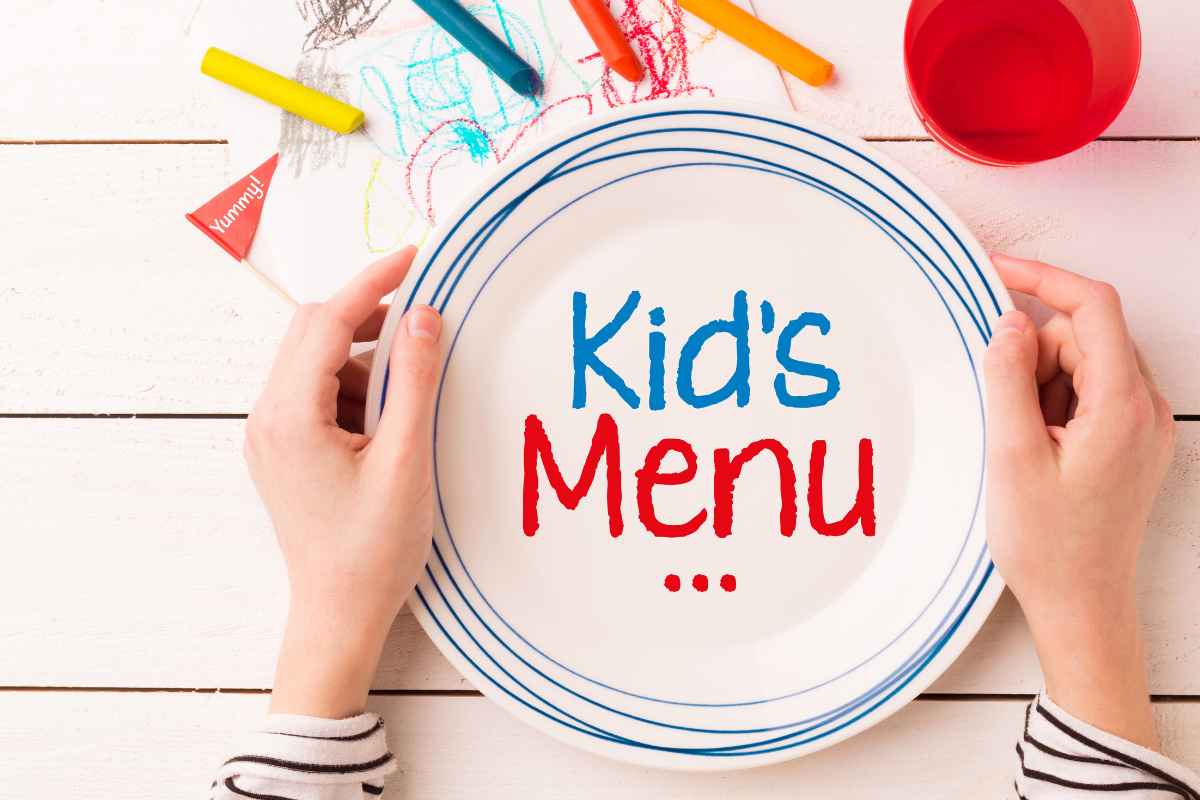Creating a restaurant menu tailored specifically for kids requires a delicate blend of understanding their taste preferences, balancing nutrition, presenting dishes creatively, offering interactive options, and managing pricing and portion control. In this step-by-step guide, we’ll delve into each aspect, ensuring that your menu not only delights young diners but also meets their nutritional needs and provides an unforgettable dining experience for the whole family. Let’s embark on a journey to craft a menu that sparks joy and satisfaction in every bite.
Understanding Kids’ Taste
Children can be notoriously picky eaters, but understanding their taste preferences is key to creating a successful restaurant menu for them. Exploring what kids enjoy eating can open up a world of possibilities for designing dishes that appeal to their palate.
First and foremost, it’s essential to recognize that kids often prefer familiar flavors and textures. While they might be curious about trying new things, they typically feel more comfortable with foods they recognize. Incorporating popular items like chicken tenders, pizza, and macaroni and cheese can be a good starting point.
Texture also plays a crucial role in children’s food preferences. Many kids enjoy foods that are crunchy or have a satisfying chewiness. Consider including options like crispy chicken nuggets, crunchy carrot sticks, or chewy chocolate chip cookies on the menu to cater to different texture preferences.
Another aspect to consider is the visual appeal of the dishes. Kids are drawn to bright colors and playful presentations. Incorporating vibrant fruits and vegetables, arranging food in fun shapes, or serving meals in colorful plates can make the dining experience more exciting for young guests.
Additionally, offering a variety of options is essential to accommodate different tastes and dietary preferences. Including a mix of healthy choices like fresh fruits, vegetables, and lean proteins alongside more indulgent treats ensures that there’s something for every child to enjoy.
Finally, don’t underestimate the power of interactive dining experiences. Activities like DIY pizza making or build-your-own taco stations not only engage kids but also allow them to customize their meals according to their preferences.
In summary, creating a restaurant menu for kids requires a deep understanding of their taste preferences. By incorporating familiar flavors, appealing textures, colorful presentations, and interactive dining experiences, you can design a menu that delights young diners and keeps them coming back for more.
Balancing Nutrition
Crafting a restaurant menu for kids involves more than just pleasing their taste buds; it also requires careful consideration of their nutritional needs. Balancing nutrition is essential to ensure that children receive the nutrients they need for healthy growth and development while still enjoying their dining experience.
When designing a kids’ menu, it’s important to offer a variety of options that provide essential nutrients. Incorporating fresh fruits and vegetables, lean proteins, whole grains, and dairy products ensures that children receive a well-rounded meal.
One strategy for balancing nutrition is to offer healthier versions of kids’ favorite foods. For example, instead of traditional fries, consider serving baked sweet potato fries or carrot sticks with a side of hummus. Similarly, opting for grilled chicken instead of fried chicken nuggets can reduce the fat content of the meal while still providing protein.
Portion control is another crucial aspect of balancing nutrition on a kids’ menu. Offering smaller portion sizes helps prevent overeating and allows children to enjoy a variety of foods without feeling overwhelmed. Additionally, providing options for half portions or sharing plates can accommodate children with smaller appetites or those who prefer to sample multiple dishes.
Incorporating educational elements into the menu can also encourage healthier choices. For example, labeling dishes with symbols indicating their nutritional content or highlighting “kid-approved” healthy options can empower children to make informed decisions about what they eat.
Lastly, don’t forget the importance of beverages in balancing nutrition. Offering water, milk, or 100% fruit juice as alternatives to sugary sodas and fruit drinks promotes hydration and provides essential vitamins and minerals.
By carefully considering the nutritional content of menu items, offering healthier alternatives, controlling portion sizes, incorporating educational elements, and providing healthy beverage options, you can create a kids’ menu that not only satisfies their taste buds but also supports their overall health and well-being.
Creative Menu Presentation
When it comes to designing a restaurant menu for kids, the presentation is just as important as the food itself. A creative menu layout can capture the attention of young diners and enhance their dining experience, making mealtime more enjoyable for both kids and their parents.
One way to make your kids’ menu stand out is by incorporating vibrant colors and playful graphics. Bold and colorful illustrations of food items or cartoon characters can instantly attract children’s attention and make them excited to explore the menu.
Another creative approach is to use interactive elements in your menu design. Consider including games, puzzles, or fun facts related to food to engage kids while they wait for their meal. Interactive menus not only entertain children but also make the dining experience memorable and enjoyable.
In addition to visual appeal, the layout and organization of the menu are essential for ease of use. Divide the menu into clear sections, such as appetizers, main courses, and desserts, to help kids and their parents navigate their options easily. Using bold headings and bullet points can also make it easier for young diners to scan the menu and make their selections.
Offering customizable options can further enhance the creative presentation of your kids’ menu. Provide choices for toppings, sauces, or sides, allowing children to personalize their meals according to their preferences. Interactive stations, such as a “build your own pizza” or “toppings bar,” add an element of fun and excitement to the dining experience.
Consider incorporating themed menus or seasonal specials to add variety and excitement to your kids’ menu offerings. For example, a “pirate-themed” menu with dishes like “Treasure Chest Chicken Nuggets” or “Pirate Ship Pizza” can spark children’s imagination and make dining out a memorable adventure.
By prioritizing creative menu presentation, you can create a dining experience that not only satisfies children’s appetites but also delights them with engaging visuals, interactive elements, and personalized options. A well-designed kids’ menu can turn mealtime into a fun and memorable occasion for the whole family.
Interactive Menu Options
Incorporating interactive menu options is a fantastic way to elevate the dining experience for kids and make mealtime more enjoyable and engaging. Interactive menus not only entertain young diners but also empower them to make choices and feel involved in the dining process.
One interactive option that appeals to kids is a “build-your-own” menu concept. Whether it’s building their own pizza, tacos, or sandwiches, children love the opportunity to customize their meals according to their preferences. Providing a selection of toppings, sauces, and fillings allows kids to get creative and experiment with different flavor combinations.
Another popular interactive menu option is the inclusion of DIY stations or activities. Setting up a “decorate your own cupcake” station or a “make-your-own sundae” bar adds an element of fun and excitement to the dining experience. Kids enjoy getting hands-on and expressing their creativity while assembling their desserts.
Interactive menus can also extend beyond food to include entertainment options. Providing coloring sheets and crayons, puzzles, or games on the menu keeps children entertained while they wait for their food. Additionally, offering kid-friendly trivia or fun food facts can spark conversation and engagement among young diners and their families.
Technology can also play a role in creating interactive menu options. Some restaurants offer tablets or digital devices with interactive games or activities built into the menu interface. While this option may require additional investment, it can enhance the overall dining experience and cater to tech-savvy kids.
Incorporating interactive menu options not only adds value to the dining experience for kids but also encourages repeat visits and builds customer loyalty. By providing opportunities for customization, creativity, entertainment, and technology, you can create a kids’ menu that stands out and leaves a lasting impression on young diners and their families.
Pricing and Portion Control
When designing a restaurant menu for kids, finding the right balance between pricing and portion control is crucial. Effective pricing strategies and portion sizes not only ensure profitability for the restaurant but also provide value for customers and promote healthy eating habits for children.
One approach to pricing kids’ menu items is to offer a range of price points to accommodate different budgets. While some families may be willing to spend more on a meal for their children, others may prefer more budget-friendly options. Offering a variety of price tiers allows families to choose menu items that fit their financial preferences while still enjoying a delicious meal.
In addition to pricing, portion control plays a significant role in managing costs and promoting healthy eating habits. Offering smaller portion sizes for kids’ meals not only reduces food waste but also prevents overeating and encourages moderation. Providing options for half portions or sharing plates allows children to enjoy a variety of foods without feeling overwhelmed by large servings.
One effective way to implement portion control on the kids’ menu is to offer combo meals or meal deals. Combining a main dish, side, and drink at a bundled price not only simplifies the ordering process for families but also ensures that children receive a balanced meal. Including healthier side options like fruit or veggies instead of fries promotes nutritious eating habits without sacrificing taste.
Another strategy for managing portion control is to offer the option of ordering smaller-sized versions of adult menu items. For example, instead of creating separate dishes exclusively for kids, consider offering half-sized portions of popular adult entrees. This approach allows children to enjoy a wider variety of flavors and ensures that families can dine together without compromising on portion sizes.
In summary, effective pricing and portion control are essential elements of creating a successful restaurant menu for kids. By offering a range of price points, implementing portion control strategies, and providing value-packed meal deals, you can attract families to your restaurant while promoting healthy eating habits for children.
| Menu Item | Price |
| Kid’s Burger | $5.99 |
| Chicken Tenders | $4.99 |
| Grilled Cheese | $3.99 |
| Mini Veggie Pizza | $4.49 |
| Combo Meal (Includes choice of main, side, and drink) | $7.99 |

